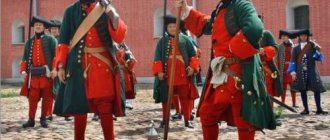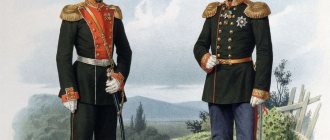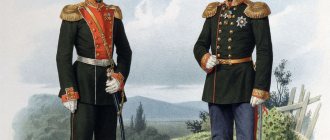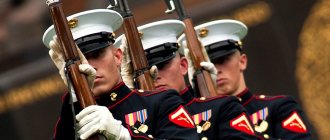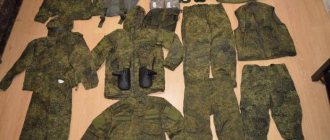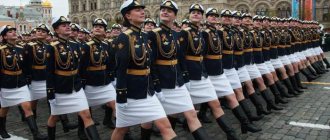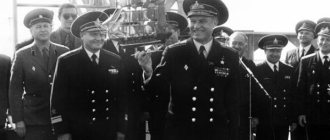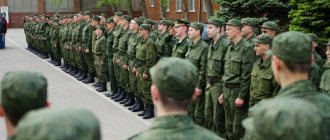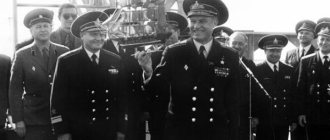Uniform of conscripts of the Soviet Army in the 70-80s of the XX century.
In the form of the 1969 model, with minor additions in terms of design (shoulder straps, emblems, stripes), introduced by subsequent orders of the USSR Minister of Defense, it had the opportunity to serve many of our readers and authors of articles. For us, this is not just history, but the story of our youth, the one in boots. Let's remember it again. Nowadays it is customary to scold and blaspheme this form, like the entire heritage of the Great Country, apparently to emphasize modern “achievements.” Let's try to figure out what the Soviet military uniform actually was.
By Order of the Minister of Defense No. 191 of July 26, 1969, a new uniform for military personnel of the Soviet Army and Navy was introduced. We will consider only the changes made by this order for soldiers and sergeants of the conscript service of the Soviet Army, who in those days gave their duty to the Motherland for two years. The appearance of the everyday and dress uniforms of soldiers and sergeants changed noticeably. Gone are tunics and riding breeches, uniforms with a stand-up collar, which, however, continued to be worn for quite a long time, and in the early 90s they were sometimes issued from warehouses to military personnel of the Russian army.
RULES FOR WEARING MILITARY UNIFORMS BY SOVIET ARMY AND NAVY SERVICEMEN (in peacetime) 1959
RULES FOR WEARING MILITARY UNIFORMS BY SOVIET ARMY AND NAVY SERVICEMEN (in peacetime) 1959
The old peacetime form did not take into account the realities of using weapons of mass destruction, as well as napalm. The gymnast was removed over the head, which created obvious problems for the fighter who came under the influence of the mentioned weapons. A jacket with buttons was clearly preferable in this sense. In addition, the developers of the new version of the uniform sought to get rid of obsolete styles and bring military uniforms into line with civilian fashion, so soldiers and sergeants received, instead of a uniform with a stand-up collar and riding breeches, a set of jacket-cut tunic, regular-cut trousers (with the ability to tuck them in) in boots) and shirts with a tie.
Uniform options for conscripts and cadets according to Order No. 191.
It is easy to notice from the illustrations above that the letters “SA” on the colored shoulder straps, which became one of the distinctive features of the 1969 model uniform, were originally intended ONLY for shoulder straps on an overcoat and a ceremonial jacket. The order specifies a dress uniform in the “trousers and boots” version and a dress uniform in the “pants and boots” version. The overcoat has remained virtually unchanged. It was still fastened with hooks, and the five buttons along the center front were purely decorative.
Also, the sleeve insignia according to the type of military service, often popularly called “chevron”, was intended only for wearing on a jacket and overcoat. The exception was the Airborne Forces, for which the wearing of such an element was also provided for on everyday uniforms.
Subsequent orders of the Minister of Defense on uniforms somewhat corrected the original appearance of the 1969 uniform.
- Firstly, the letters “SA” appeared on all shoulder straps, except for the field uniform with protective shoulder straps and work kits. In the 70s, these letters were also made of metal, but by the 80s, such a detail became only a desirable attribute of demobilization decoration, and “statutory” shoulder straps were issued and sold only with yellow letters, for the manufacture of which PVC plastisol was used.
- Secondly, the star on the earflap hat was replaced with an emblem similar to the one attached to the cap. For some time, the “star with a wreath” existed in the form of two separate parts, when the “wreath” was attached to the hat in addition to the existing star. Such delights were encountered in the period until about 1974.
- Thirdly, cotton uniforms were considered as an everyday uniform (later they began to sew them from fabric with the addition of synthetic fiber - the so-called “glass”) with a cap (for the bulk of military personnel in summer uniform), a Panama hat (for areas with hot climate) or beret (for airborne forces). The set was complemented by a waist belt with a brass plaque, which had to be cleaned all the time. For the field uniform, according to the texts of the orders of the Ministry of Defense, a special set of equipment had to be stored in assembled form, which included a belt with a khaki-colored badge, shoulder straps and equipment worn on the belt in accordance with the military specialty. In practice, this was not carried out everywhere and not always.
In theory, colored shoulder straps and buttonholes were sewn on top of similar khaki-colored elements already sewn on at the factory. If necessary (for a special period), colored shoulder straps had to be removed. The multi-colored version was never considered acceptable during hostilities; it is a peacetime uniform.
Clarified rules for wearing military uniforms were introduced by Order of the Minister of Defense No. 250 of November 1, 1973. Below in the illustrations you can see the corresponding tables with samples from the order itself.
Options for the daily uniform of conscripts and cadets according to Order No. 250 of 1973. The differences from the basic version of 1969 are obvious - the letters “SA” and “K” (for cadets) on the colored shoulder straps of the everyday uniform and the emblem in the form of a star with a wreath on the cap. Military personnel of “groups of forces” in the Warsaw Pact countries, as well as some units on the territory of the USSR, received uniforms made of wool blend fabric, the so-called “PSh”, for the winter period. This set was similar in cut to the standard “HB” one, but did not have knee pads and the seams were positioned slightly differently. In none of the texts of orders on uniforms is “PSh” shown separately in the illustrations. You can judge what this set looked like from the following photo.
PSh set.
This version of the everyday uniform was made from the same material as the front uniform; in general, it was similar in style to the “HB” set, but differed slightly in details (the seams and knee pads).
HB kit.
The set, sewn from pure cotton fabric, had a straw-yellow tint and faded badly in the sun. The texture of the fabric could differ noticeably from factory to factory. The same set of fabric with the addition of synthetic fibers could have a color from light pea to almost brown (dark khaki).
The most traditional element of the uniform is the overcoat. It remained almost unchanged until the very end of the USSR and, accordingly, the Soviet Army. However, some design elements relative to the version defined by the 1973 order were introduced later. If you look closely at the illustration below, you will notice on the sleeve of a private’s overcoat the so-called “year marks” - two stripes corresponding to the second year of service. This element was also used on the dress uniform. Later, in the wake of the fight against “hazing,” it was canceled and after 1982 it could only be seen as hazing at demobilization “parades.” The absence of differences in the appearance of soldiers and sergeants according to the length of service provided for by the order led to the emergence of various unspoken traditions, which were sometimes observed very carefully and scrupulously. A holy place is never empty, as they say.
The 1973 order also introduces a “quilted jacket,” usually called a pea coat, which is much more practical than an overcoat, as a winter version of the field uniform, and not just as a working uniform. In practice, pea coats were often worn constantly instead of overcoats.
Options for field uniforms according to Order No. 250 of November 1, 1973. The sergeant's stripes on his khaki shoulder straps were red. Note that in the order the field uniform is still considered with colored shoulder straps, i.e. this is essentially the same peacetime version, designed for exercises and training at training grounds.
Strictly speaking, the letters on shoulder straps for everyday uniforms were introduced by a separate order of the Minister of Defense - No. 16 of January 23, 1973, which also determined the timing of the transition. Metal letters were intended for the dress uniform. All these elements, which decorate the appearance of a serviceman from the point of view of the command of the USSR Armed Forces, and also create constant concern for the personnel to maintain them in proper order (cleaning badges, replacing buttons and shoulder straps, etc.), in wartime, of course, should were to be removed. The dress code for the “special period” version shown in the illustration below is also taken from the text of Order No. 250 of the USSR Ministry of Defense.
The Soviet Army was preparing for an all-out war with NATO or China, and not for a series of local skirmishes and anti-terrorist operations. In this sense, the design and cut of the shape was completely justified, because... the simplicity and cheapness of the kit for a soldier in a mass conscript army came to the fore. Much reviled by modern connoisseurs of expensive high boots and camouflage, the boots were ideal footwear for a soldier operating in the European theater of operations. You just had to be able to wear them. The “HB” set could be washed even in the nearest body of water, and dried on yourself; wet foot wraps were rewound on the go, so that the dry part moved from the shin to the foot, and you could continue moving in a couple of minutes, without thinking about spare socks and others modern delights. Foot wraps, by the way, were issued for a week. Of course, instructions for wearing such a uniform were not needed, and the soldier added “additional layers based on his own thermal sensations” by using ordinary civilian sweaters with cut off sleeves and collars, usually called “stitchers.”
However, already since 1975, the development of a new field uniform has been underway - more convenient and practical. This set was later called the “Afghan”, but its final version did not come together right away - experiments were carried out with the cut, number of pockets, etc.
The next order of the Minister of Defense, which noticeably changed the appearance of conscript soldiers and sergeants, also bore the number 250. Only this happened in 1988. It was Order No. 250 of March 4, 1988, signed by Army General Yazov, that finally officially introduced the “Afghan” as a type of field uniform for all soldiers and sergeants of the Soviet Army. It was this order that approved the dashing appearance of the paratrooper in a special dress uniform with a vest under a tunic and a beret (previously, the authorized dress uniform of the Airborne Forces was a combined arms uniform with a cap). For the Airborne Forces, a special camouflage version of the everyday uniform was also introduced. For all other conscripts, colored shoulder straps on the “KhB” were forever a thing of the past, but they were still retained on dress uniforms and overcoats; they were also not removed from the “PSh” sets. All of the above points can be seen in the illustrations below.
Options for the dress uniform of conscript soldiers and sergeants and military school cadets according to Order No. 250 of 1988.
Variants of the ceremonial uniform according to the same order. Finally, soldiers and sergeants got the opportunity to wear a shirt with shoulder straps. Before this, a cotton shirt with shoulder straps with buttons was worn under the jacket, which wrinkled very much. Buying shoulder straps for a shirt was a problem in some places even in the spring of 1989. The new conscription immediately received this version of the dress uniform, and the already serving soldiers and sergeants wore the old one. It was temporarily allowed to use “empty” shoulder straps for warrant officers and long-term conscripts, having pasted the letters “SA” on them. It was in this form that the author resigned from the ranks of the USSR Armed Forces in May 1989.
Casual uniform options. Colored shoulder straps are no longer available on summer casual uniforms. But in fact, the massive transition to protective shoulder straps took place only in the spring of 1989, although the process began earlier. Often the “demobilization” in the spring of 1989 continued to wear the old “KhB” with colored shoulder straps, and other personnel had already brought their appearance in accordance with Order No. 250.
Field uniform. In reality, such kits were not issued to everyone; huge stocks of old uniforms still had to be sold. So the previous version with a cap and a regular jacket of the 1969 model was also envisaged as a field one (see next photo).
In addition to the uniform sets mentioned above, conscripts were entitled to a working kit. But in practice, it was usually used as a “replacement”, i.e. a used jacket and trousers of a standard cut and the same universal “quilted jacket”. To work on equipment, military personnel of the relevant specialties were given various kinds of special kits, and military builders used the so-called VSO kit. Let us not forget, however, that even strictly according to the text of the orders of the Minister of Defense, military builders are mentioned separately - see the following illustration.
What the “summer work uniform of military construction workers” looks like in practice can be seen in the following picture.
In areas with harsh climates, the standard winter uniform was unsuitable. For such conditions, felt boots, “long-eared” hats and other “northern” items of clothing were issued.
The “northern” hat made it possible to more reliably protect the neck and lower jaw from the cold than the general army version.
We deliberately omitted in the article the uniform of soldiers and sergeants of the Internal Troops, the Border Troops of the KGB of the USSR, naval units and subunits wearing the combined arms uniform and the uniform of the USSR Navy Marine Corps, because this goes beyond the scope of an article devoted exclusively to military personnel of the Soviet Army.
The traditions of wearing military uniforms, various kinds of “non-statutory rules” and “demolition folk crafts” also remained behind the scenes, because This is material for a separate study.
You can learn more about individual elements of the uniform of soldiers of the Soviet Army in the articles on the “Youth in Boots” channel.
Modern analogues of legendary military suits
Naturally, military costumes from those years were preserved only by veterans, in museums or by collectors. But you can buy modern products that are no different from wartime equipment. The same materials are used for their production. You can also purchase products made from modern materials (polyester) that do not fade or wrinkle.
In our online store, every resident of Russia can buy a Red Army uniform at the most affordable price. "Attack" offers many advantages:
- delivery with fitting (allows you to choose the most suitable model in size);
- return option within 30 days;
- several convenient payment options;
- 5% discount for registered users on the site.
It is also worth remembering that users receive bonuses with every purchase.

